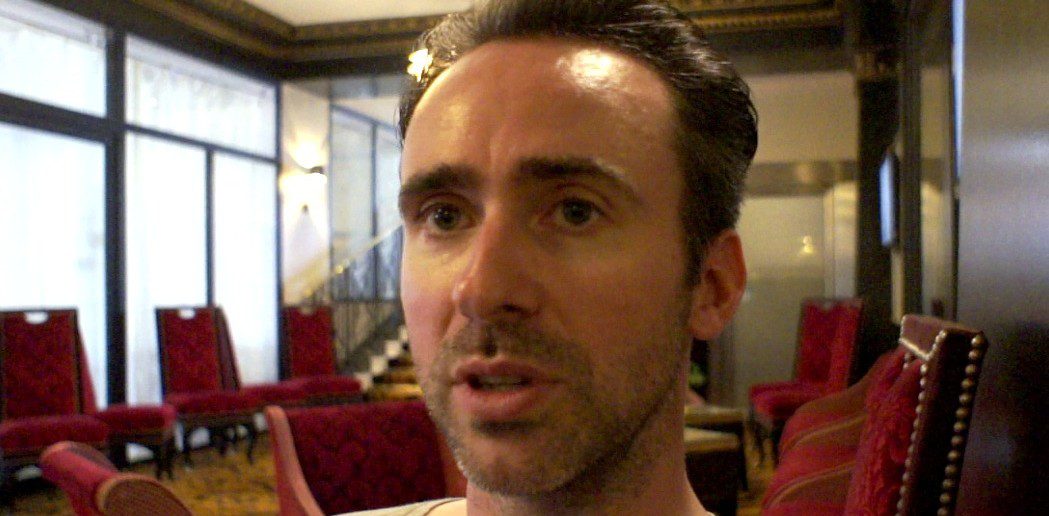Nick Bailey (photo), executive creative director of AKQA Amsterdam, told MIPBlog about Star Player, the 2screen TV football game/app his agency created for the UEFA cup. The game, in which players win points based on whether they can accurately predict the outcome of the match’s next events, had just won a Gold Lion, one of the advertising industry’s highest accolades, at the Cannes Lions festival. The app’s idea, said Bailey, was to “step into football’s ‘edge of your seat’ moment, but not interruptively; rather to enhance that experience.” Game-changing?
– MIPBlog: Could you explain Star Player?
Nick Bailey: The intention was to enhance the experience of watching the UEFA Champions League (football games) on TV. Heineken sponsors the league, and they came to us with the objective of engaging people globally with what is essentially a European tournament; and giving fans of football more reasons to watch and engage with the match. We felt we wanted to create a mobile and social media engagement, but not some kind of prediction mechanic. So we worked with a firm in Canada to come up with an app which fires out alerts as real-time events happen on the pitch (eg. a free kick, penalty or corner) so if at any time in the game you feel a goal is likely, you can hit a button. If a goal actually happens in the next 30 seconds, then you win points. People can play either on their mobile phones or on Facebook, whilst they’re watching TV.
– I gather latency was a key challenge?
Yes, it was something neither broadcasters nor UEFA weren’t able to tell us, because before, noone needed to know the delay between something happening on the pitch and on the screen. It’s deteremined by stuff like the processing speed of your set-top box, or whether you’re watching on cable, satellite, or terrestrial. So we had to set up a research project in ten markets to find out exactly what the latency time was. Luckily, it was within the tolerance of the game; but that work will also be really useful for any other 2screen projects in the future.
Then there was the development of the game itself, which involved a lot of testing too. It finally launched in one language in April, for the semi-finals; and will launch again in September, for the group stages of the tournament, in something like 17 markets, on Android and iPhone.
– How did it do in engagement terms?
We don’t have all the numbers in yet but it did do very well in press and buzz terms: seven times greater than what we expected, in fact. From a consumer point of view it surpassed both our and the brand’s expectations, both in terms of testing and the number of downloads and plays of the game. So we’re really excited about the potential for next season.
– Would you say we’re still at the early stages of what can be done with 2screen?
No, I wouldn’t actually. (What we’ve done) feels pretty sophisticated, and demonstrates the depth and breadth of opportunity for brands in dual screening. It also taps into the way the UEFA tournament is viewed, as 70% of viewers watch it at home alone, as the games are typically mid-week. We also knew that those people were using a laptop or a mobile phone. So it was clear from those two consumer behaviours that there was a strong foundation for a good idea and good execution.
Star Player is actually a very sophisticated game and a rich experience: you may have up to ten alerts during a match, plus there are trivia questions if the game gets dull… But the key thing with any 2screen project is it has to tap into an existing behaviour. Our client called it that ‘edge of your seat’ moment, where the tension and the drama increases and your attention is brought into the match. We wanted to step into that space. Not interruptively, but in a way that enhances that experience, and gives you something to do with those itchy fingers. We also have private leagues, so at any time you can check how your friends are doing in the rankings…
– …like a game within the game?
Exactly. And not just locally, globally. So immediately after a moment plays out, you can check to see how the world responded.
– Is it for hardcore or casual football fans?
It’s true to the way football’s viewed that you have a minority of hardcore fans who really understand the game, so they have a competitive advantage (in Starplayer). But then you’ve got this huge, much larger mainstream audience, for whom the game is still engaging, because you’ve got any one of four outcomes per moment. Our experience was that you get people with no interest in football at all really getting into the match, getting excited about being able to predict a goal! So it’ll be interesting to see how it evolves, but it certainly does feel like it’s the first of many of these types of engagements.
– Would you agree that sponsoring brands are now happy to stay in the background (as opposed to logos in your face all the time)?
There’s a reason why people have their computers and phones on whilst they’re watching TV: so they have something to do when the adverts are on! Noone’s going to engage with another advert to avoid watching an advert. So if you can do something that genuinely enhances and engages people around the content they’re watching, that’s fantastic. People are watching for the content, and they’ll tolerate advertising if it’ll keep their attention between the start and the end of the commercial break. So brands have to be circumspect about not creating another interruption into the space that consumers are using to avoid it!





3 Comments
Pingback: Heineken lance une application de paris en ligne d’un genre nouveau pour la coupe de l’UEFA : Veille du Brand Content
Pingback: Interview with Contagious’ Ed White: Where consumers, brands & tech meet – MIPCube Preview | MIPBlog
Pingback: Liveblog: Branded Entertainment: Audience Engagement with Brands | MIPBlog